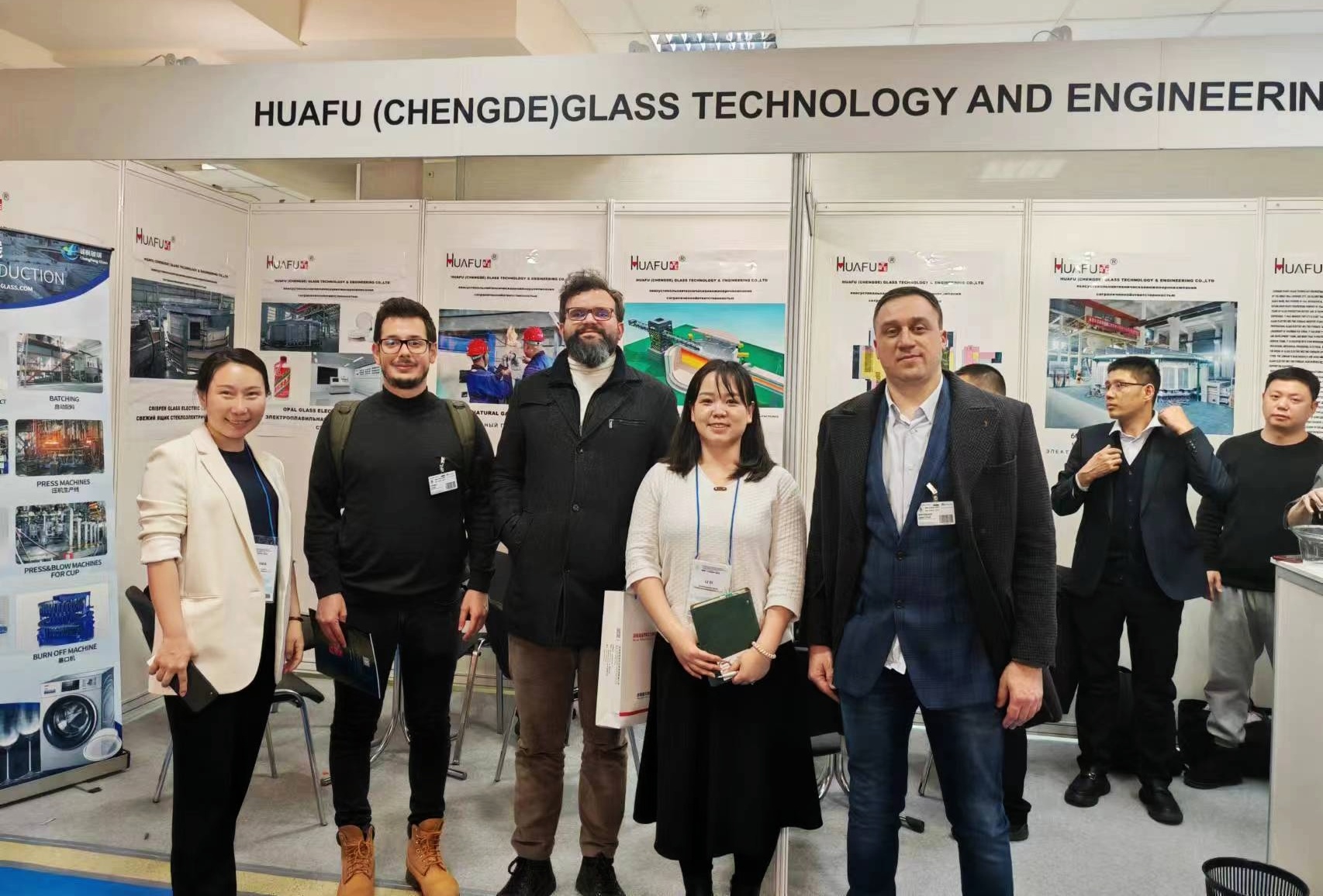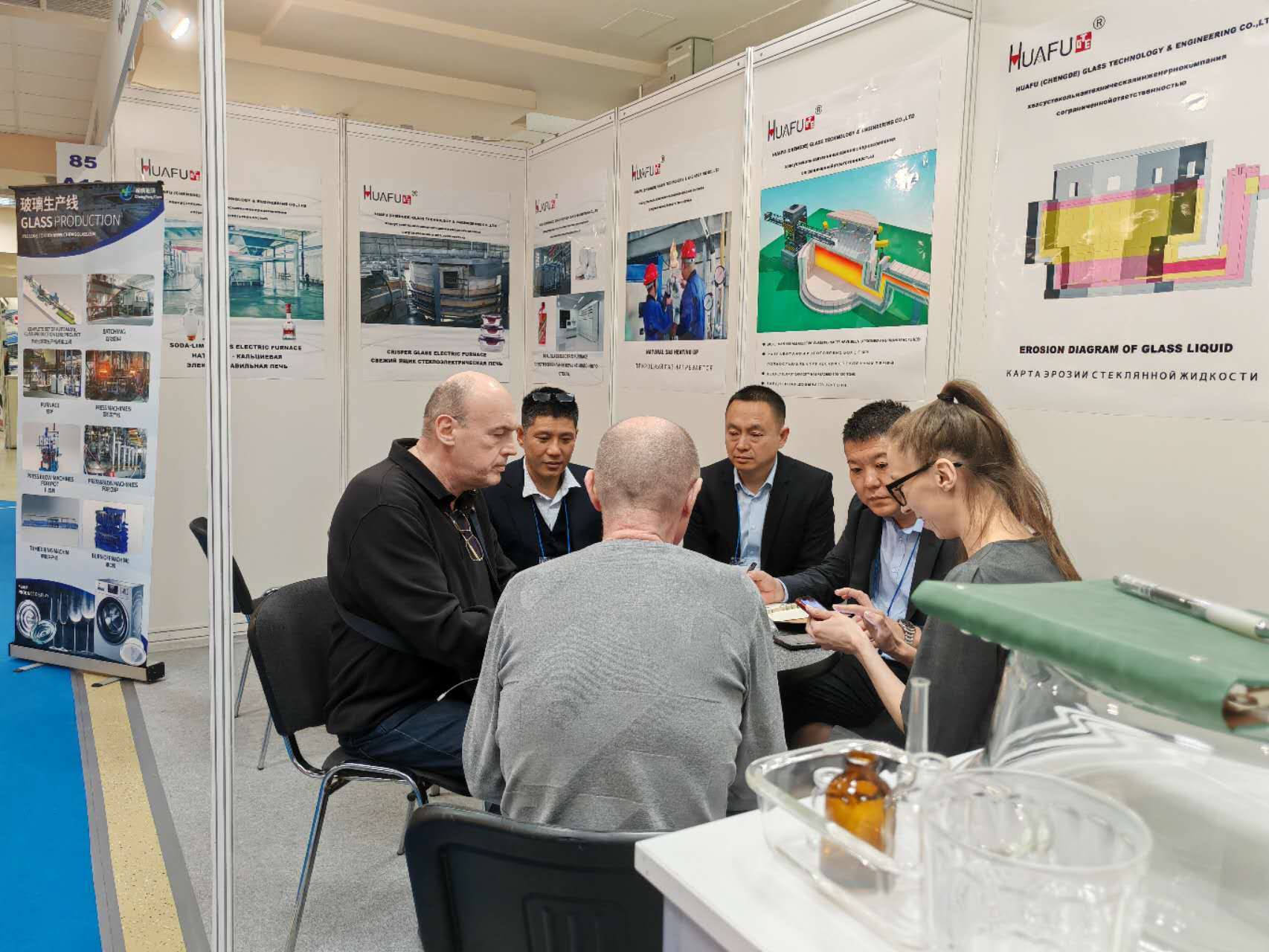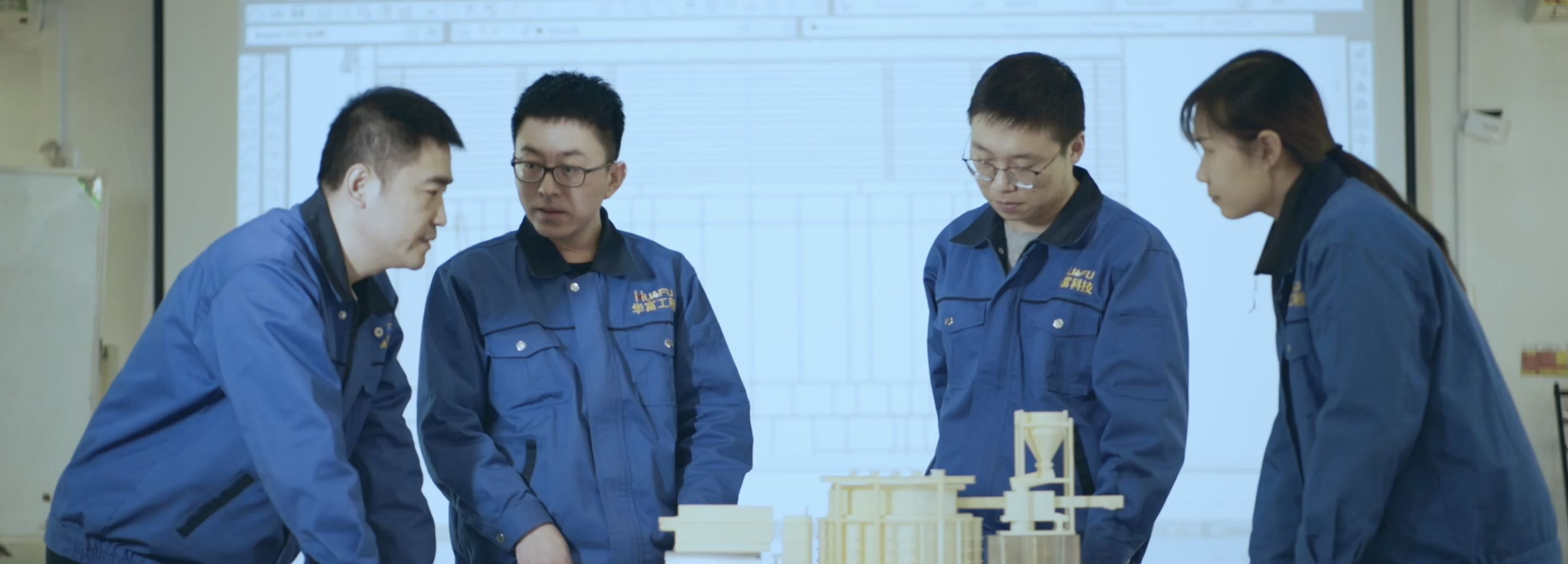Spring is coming, the blessing of future is planted--Record Russia Exhibition in 2024
Release time:
2024-02-26 00:00
Source:
With the intensive cooperation between China and Russia in recent years, China has become Russia's largest trading partner. According to Chinese customs statistics, in 2024, the trade value between China and Russia reached 238.642 billion USD, with a year-on-year growth of 26%. Influenced by relevant policies on energy conservation,sustainable development and geopolitics,the Russian demand for Chinese products has increased sharply.
 After the Lantern Festival, the five members of Huafu went to Russia and participated in the trading exhibition. This is also the first time that Chengde Huafu Glass Technology Engineering Co., Ltd. participated in the exhibition abroad after the epidemic. The buyers were mainly from Russia, Turkey, Uzbekistan, Belarus and so on, working in tableware, medical glass, decorative glass and other fields.
After the Lantern Festival, the five members of Huafu went to Russia and participated in the trading exhibition. This is also the first time that Chengde Huafu Glass Technology Engineering Co., Ltd. participated in the exhibition abroad after the epidemic. The buyers were mainly from Russia, Turkey, Uzbekistan, Belarus and so on, working in tableware, medical glass, decorative glass and other fields.
 Besides participating in the exhibition, sales manager, Mr Wang was sincerely invited to the factory by the customer. Communicating with customers about industry trends and learning about market dynamics. Customers shared their experiences and insights, and let us deeply feel the potential and charm of the Russian market. Customers expressed high praise for our products and expressed their willingness to pursue further cooperation. This has strengthened our determination to expand into the Russian market.
Besides participating in the exhibition, sales manager, Mr Wang was sincerely invited to the factory by the customer. Communicating with customers about industry trends and learning about market dynamics. Customers shared their experiences and insights, and let us deeply feel the potential and charm of the Russian market. Customers expressed high praise for our products and expressed their willingness to pursue further cooperation. This has strengthened our determination to expand into the Russian market.
Huafu will continue to focus on the development of overseas markets for the new year, and combining with market demand and energy supply and will lead technique trend, honesty,quality, service and the pursuit of excellence.
Related News
Operating Principles and User Guide of a Glass Electric Melting Furnace
Working Principle and Operation Guide of Glass Electric Melting FurnaceIn the production of glass products, the glass electric melting furnace is undoubtedly one of the most crucial pieces of equipment. It can not only efficiently melt glass raw materials but also ensure the quality and consistency of the glass. So, how exactly does a glass electric melting furnace work? And what precautions should be taken during its operation? Next, let's take an in-depth look at this fascinating piece of equipment.
What are the key factors in the design of a glass electric melting plan?
What are the key factors in the design of a glass electric melting scheme? In the modern glass manufacturing process, the 'glass electric melting furnace' has attracted increasing attention as an advanced melting equipment. So, when designing such a melting scheme, what key factors need to be considered? Today, let's talk about this topic.
1. Key indicators for successful commissioning The operation of the furnace needs to follow two balances (balance between feeding and discharging volume, balance between power transmission and heat output) and three stabilizations (stable discharge, stable raw material layer, and stable power input). The thickness of the raw material layer is controlled at 150-180 mm, and the surface bubbles evenly. Power adjustment should be carried out slowly, with each adjustment amount not exceeding 1% of the operating current and the interval time exceeding 10 minutes. 2. Operation and maintenance and inspection requirements of the furnace Check the operating temperature, control parameters, circulating water temperature, transformer status, etc. every hour, and fill in the operation record form truthfully. Regularly inspect the cooling water system, air-cooling system, and key parts of the furnace (such as electrode holes, slag discharge holes), etc., to ensure that there are no abnormalities. Inspect the power outage emergency equipment every month to ensure that it can start normally in the event of a sudden power outage.
Operation steps and techniques of glass electric melting furnace
Operation steps and techniques of glass electric melting furnace In the modern glass manufacturing industry, bottle making glass electric melting furnaces are becoming more and more widely used. It not only improves production efficiency but also reduces energy consumption. However, many people do not know much about its operation steps and techniques. Today, we will discuss in detail how to properly operate a bottle making glass electric melting furnace to ensure the production of high-quality glass products.
Physical and chemical properties and characteristics of glass liquid
The physical and chemical properties and characteristics of alkaline slag glass liquid such as erosion resistance, impedance, thermal stability, mechanical strength, bulk density and shrinkage. Among them, the glass liquid performs prominently in the reducing atmosphere and can effectively block metal drilling; low expansion coefficient and good thermal shock stability; After high temperature sintering, a dense structure is formed, with an internal compressive strength of up to 10-12 megapascals and a compressive strength of up to 64-70 megapascals. In addition, the configuration of capacitive high steel jade guide feeding, including inverted feeding, sealing material and mud, as well as the configuration method of binder, is also introduced.
What matters need to be paid attention to in the installation of steel structures
Precautions for steel structure installation: 1. During installation, it is necessary to ensure that the main foundation of the center is parallel to the plant building, and the promotion of the batching system should be well connected. 2. Calculation method of stair cutting size: calculated by horizontal height, horizontal length and channel steel model. 3. When installing decorative columns, first set the straight plane and then hang the angle circle beam to ensure accuracy and stability.


